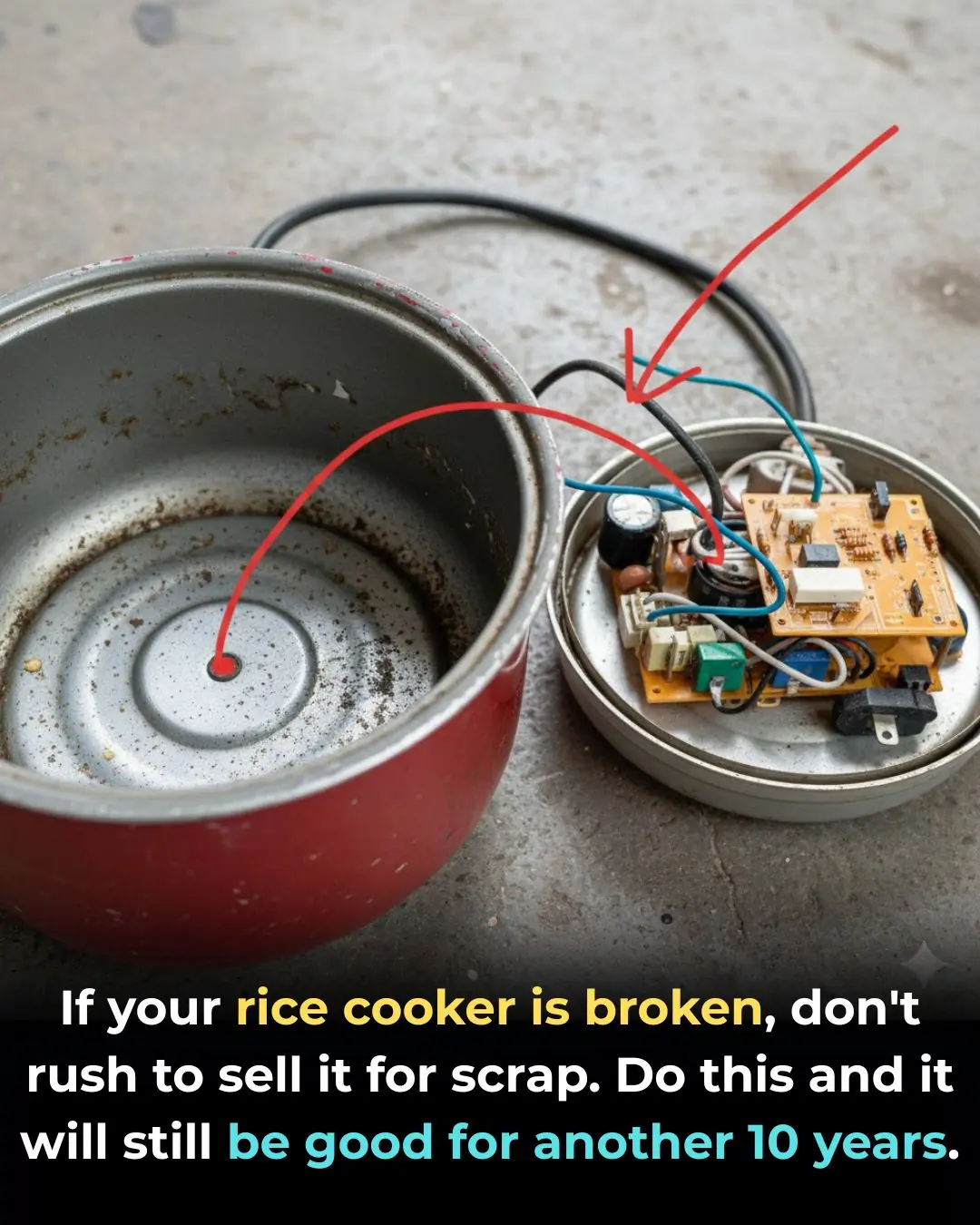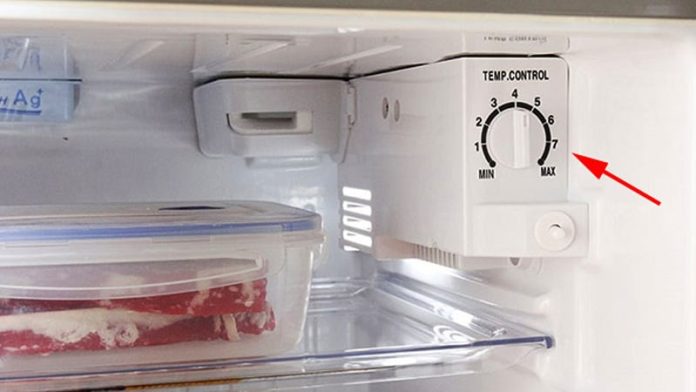
Refrigerator has a small button that can save millions in electricity bill: Many people don't know this.
Few people realize that inside every refrigerator, there is a small control knob that should be adjusted during the winter months to help significantly reduce electricity consumption.
Today, refrigerators are indispensable household appliances, running 24/7 throughout both summer and winter to keep food fresh and safe for a longer period of time. Because they operate continuously, refrigerators are also among the appliances that consume the most electricity in a home. What many users don’t know is that simply adjusting one small setting during the colder months can noticeably cut down the household’s energy bill.
How Should You Adjust Your Refrigerator Temperature in Winter to Save Energy?
According to statistics released by Vietnam Electricity (EVN) in May, a large refrigerator consumes an average of 50–75 kWh per month—ranking third among household appliances, after electric stoves and water heaters.
Of course, this figure is only an average. In reality, the amount of electricity used can vary greatly depending on user habits. During winter, one simple action—adjusting the temperature controls of both the freezer and fridge compartments—can help reduce unnecessary energy waste. Many people overlook this because they rarely change the settings once the refrigerator is installed.
Refrigeration experts recommend lowering the cooling level during colder weather. Most modern refrigerators display temperature levels ranging from 1 to 5 or 1 to 6. While the highest settings might be necessary during the summer, winter temperatures naturally help keep the interior cool. At this time, users can safely reduce the setting to level 2–3, or even level 1.
At level 1, the fridge compartment usually maintains a temperature of around 2–5°C. This is still safe for food storage while reducing the workload on the compressor, which results in lower electricity consumption. The same principle can be applied to the freezer compartment as well.
Adjusting Temperature Based on the Amount of Food
Besides adjusting settings according to seasonal weather, users should also consider the amount of food stored in the fridge.
-
When the fridge is lightly stocked, reducing the cooling level is perfectly fine, as the appliance does not need to work as hard to keep food cold.
-
When storing large amounts of food, turning the setting back up is necessary to maintain proper cooling efficiency.
For the freezer, if you are storing a lot of fresh ingredients such as seafood or meat, experts recommend keeping the temperature at about -18°C. At this level, bacterial growth is minimized, ensuring longer and safer food preservation.
Additional Tips to Help Your Refrigerator Save Electricity
In addition to adjusting the temperature settings in winter, experts also suggest a few habits that can reduce energy usage and extend the lifespan of the appliance.
1. Place the Refrigerator in a Proper Location
Most refrigerators release heat from the back or the sides. If these areas are blocked—placed too close to a wall or other furniture—the heat cannot escape efficiently. This causes the compressor to work harder, increasing electricity consumption.
Avoid placing the refrigerator near heat-generating appliances such as microwaves, ovens, or electric stoves. When appliances that emit heat are clustered together, the surrounding temperature rises, affecting performance and potentially reducing lifespan.
2. Avoid Keeping the Door Open for Too Long
Opening the refrigerator door for extended periods lets cold air escape. The compressor then has to work overtime to re-cool the interior, which results in higher energy usage. Planning what you need before opening the door can help minimize unnecessary energy waste.
3. Store Food in Glass or Ceramic Containers
Experts recommend using glass or ceramic containers because these materials retain cold more effectively than plastic. When arranged neatly—without overcrowding—cold air circulates more evenly, allowing the appliance to operate more efficiently and use less energy.
4. Clean and Maintain the Refrigerator Regularly
Regular cleaning, ideally every 1–3 months, prevents dust and dirt from accumulating around air vents or on the condenser. This buildup can force the compressor to work harder, raising electricity consumption. Cleaning also helps eliminate food odors and keeps the appliance running smoothly.
For best results, users should also check the door seals periodically. If the rubber gasket becomes loose or damaged, cold air can leak out, resulting in wasted energy.
News in the same category


5 Fruits on the ‘Blacklist’ That Can Cause Cancer – Avoid Buying Even If Cheap

Pork Skin – The Often Overlooked Superfood

Don’t Throw Away Lemon Peels! Use Them for These 8 Household Tasks and Save a Ton of Money

10 surprising ways to use vinegar around the house

Stop eating these 10 things of CRAP

Mix Banana Peels With This and Leave It in a Corner — Roaches Will Disappear Overnight

Weak Toilet Flush and No Suction? A Simple Trick From a Professional That Fixes It Instantly

Genius Ways to Store Ginger Without a Refrigerator — Keep It Fresh for an Entire Year

Everyday Habits That Could Be Quietly Ruining Your Home

The Secret Trick That Makes Tofu Taste Better

Thought this was mold but I guess not. Am gonna check my bathroom again

When washing clothes, don’t just put in detergent! Do this little trick, dirty clothes will be like new!

How to dry clothes quickly and not smell bad even if it rains for days on end

The 'lightning-fast' secret to making sweet, flavorful Japanese-style sweet potatoes in just 5 minutes

If your rice cooker is broken, don't rush to sell it for scrap. Do this and it will still be good for another 10 years.

How to boil squid to make it plump, crispy, and delicious

How to wash grapes to remove dirt and white powder, safe to eat with the skin

2 ways to clean wet, smelly shoes after rainy days, clean as new
News Post

Top 10 Uric Acid Foods To Avoid If You Have Gout

Belgium’s Floating Algae Mats: A Green Breakthrough in Urban Water Purification

France Reimagines Shelter Boundaries With Community Corn Walls

5 Simple Ways to Remove Rust from Knives – Make Your Dull, Rusty Knife Shiny and Sharp Again

5 Fruits on the ‘Blacklist’ That Can Cause Cancer – Avoid Buying Even If Cheap

“New Research Reveals How Aging Impacts Male Fertility and Sperm Health”

Pork Skin – The Often Overlooked Superfood

Don’t Throw Away Lemon Peels! Use Them for These 8 Household Tasks and Save a Ton of Money

10 surprising ways to use vinegar around the house

Stop eating these 10 things of CRAP

Mix Banana Peels With This and Leave It in a Corner — Roaches Will Disappear Overnight

Discover how eggs support your baby’s brain development — full details in the comments!”

Weak Toilet Flush and No Suction? A Simple Trick From a Professional That Fixes It Instantly

Five “Dirtiest” Parts of the Pig That Butchers Never Take Home for Their Own Families

Blueberries: A Powerful Daily Boost for Heart Health

The Whole Family of Three Was Diagnosed With Thyroid Nodules; the Mother Collapsed: “I Thought Those Two Things Were Always Good to Eat and Could Prevent Cancer”

Motherhood Rewires the Brain: Why Postpartum Recovery Takes Years, Not Weeks

Eating More Than One Egg a Week May Slash Alzheimer’s Risk by 47%

CRISPR Breakthrough Offers Hope for a Potential HIV Cure

